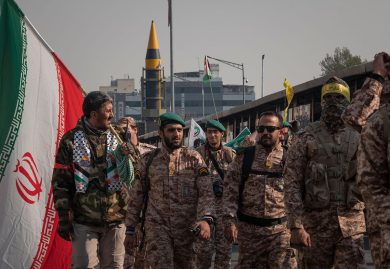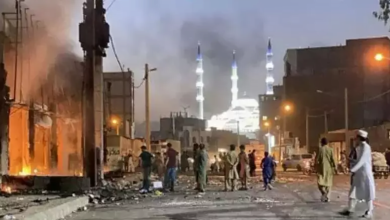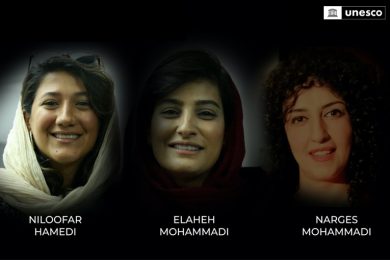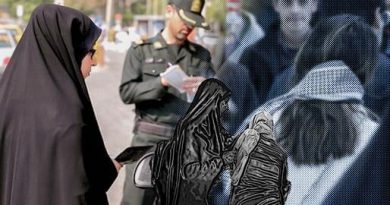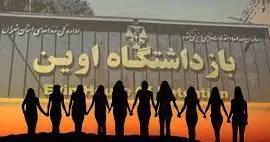For more than four decades, Iranian women have lived under a regime that sees their bodies as ideological battlegrounds. At the heart of this control stands the Islamic Revolutionary Guard Corps (IRGC), which, through its sprawling paramilitary and intelligence apparatus, enforces one of the most visible and violent tools of state repression: mandatory hijab laws.
But in recent years—and especially since the killing of Mahsa (Jina) Amini in 2022—Iranian women have led a defiant uprising against the IRGC’s control. Their resistance has morphed from a dress code protest into a revolutionary movement for freedom, equality, and dignity.
This article explores how hijab enforcement became a flashpoint for revolution, the IRGC’s role in gender-based repression, and why Iranian women now represent the most powerful force against one of the world’s most entrenched theocracies.
1. The Hijab as a Tool of Political Control
The Islamic Republic instituted mandatory hijab laws in the early 1980s. What began as “moral guidance” soon evolved into an extensive legal and enforcement regime targeting women across all sectors of public life.
Legal Framework:
• Women must cover their hair, arms, and legs in public
• Violations are punishable by fines, imprisonment, or lashes
• “Improper hijab” is broadly defined and arbitrarily enforced
But the hijab is more than a dress code—it is a symbol of loyalty to the regime. By controlling women’s appearance, the state reinforces ideological conformity.
2. The IRGC and Hijab Enforcement
While the morality police (Gasht-e Ershad) are the public face of hijab enforcement, the IRGC is the core enforcer of the policy.
Key Players:
• Basij militia: Operates under the IRGC; patrols streets, malls, and universities to enforce dress codes
• IRGC Intelligence: Tracks violators, organizes sting operations, and conducts interrogations
• Cyber Units: Monitor social media for unveiled photos and feminist content
• IRGC-linked judges: Prosecute women for “promoting corruption and indecency”
The system operates like a militarized gender police, with the IRGC acting as both executioner and ideologue.
3. Mahsa Amini and the Breaking Point
In September 2022, 22-year-old Mahsa Amini was arrested in Tehran by the morality police for allegedly wearing her hijab “improperly.” She was taken into custody and died three days later from blows to the head.
Her death sparked an unprecedented nationwide uprising, led primarily by women and girls. Protesters chanted:
“Woman, Life, Freedom”
“Death to the Dictator”
“With or without hijab, we are going forward”
The IRGC responded with brute force—live ammunition, mass arrests, torture, and executions. Yet the rebellion only grew.
4. How the IRGC Enforces Gender Apartheid
Hijab enforcement is just one part of a broader system of state-sponsored misogyny.
IRGC Tactics Include:
• Street arrests and beatings by Basij
• Surveillance drones and facial recognition cameras to detect unveiled women
• Public shaming via forced confessions on state TV
• Legal harassment: Charges of “spreading corruption on Earth” or “promoting prostitution”
• Prison torture and sexual abuse (documented in multiple survivor testimonies)
The goal is to not only force compliance, but to instill psychological fear and social control.
5. The Cyber Front: Digital Policing of Women
The IRGC’s cyber units play a major role in targeting women online.
Key Tactics:
• Monitoring Instagram, Telegram, and WhatsApp for unveiled photos
• Hacking and leaking private images of feminist activists
• Creating fake feminist pages to entrap users
• Spreading disinformation about unveiled women being “foreign agents”
Apps such as Soroush and Baleh, developed with state support, are laced with surveillance backdoors.
Women who gain large followings online are routinely arrested or coerced into apologies.
6. Schoolgirls and Students Join the Fight
One of the most remarkable features of the 2022–2023 protests was the participation of schoolgirls—some as young as 12.
Acts of Defiance:
• Removing hijabs in class
• Flipping off Supreme Leader portraits
• Chanting “Death to the Dictator” in school halls
• Organizing flash protests and documenting crackdowns
The IRGC responded with:
• Expulsions and detentions
• Beatings by school officials under Basij direction
• Chemical attacks on girls’ schools (still unresolved but widely believed to be state retaliation)
The battle over the hijab became a generational revolt.
7. Women Political Prisoners: Resistance Behind Bars
Hundreds of women have been imprisoned for defying the IRGC’s control.
Notable Cases:
• Narges Mohammadi: Nobel Peace Prize laureate, tortured and denied medical care
• Sepideh Gholian: Labor activist, arrested repeatedly and beaten
• Yalda Moaiery: Photojournalist imprisoned for documenting protests
• Zahra Mohammadi: Kurdish teacher sentenced for teaching mother tongue
These women have turned Iran’s prisons into sites of resistance—issuing statements, hunger striking, and refusing to break.
8. The IRGC’s Ideological War on Women
The IRGC’s crackdown is not just about laws—it’s about ideological warfare.
The Regime’s View:
• Women are guardians of Islamic morality
• Unveiling = rebellion against the Islamic Republic
• Feminism = Western conspiracy
• Equality = threat to national security
This view is promoted via:
• IRGC-run state media
• School textbooks
• Religious sermons
• Propaganda apps and social media channels
Every act of female autonomy is cast as an existential threat to the regime.
9. Resistance in Exile and Solidarity Abroad
Iranian women in the diaspora have become the international voice of this revolution.
Global Actions:
• Hair-cutting ceremonies in parliaments and protests
• Art exhibitions, film screenings, and storytelling campaigns
• Advocacy for IRGC terrorist designation
• Testimony before UN, EU, and national legislatures
Figures like Masih Alinejad have survived assassination plots, cyber harassment, and family intimidation—but continue to lead globally.
10. Global Implications of a Gender Uprising
This is not just a fight over cloth. It is a revolution with global significance.
Why It Matters:
• Challenges theocracy and authoritarianism
• Redefines feminism as a global, intersectional force
• Undermines IRGC’s moral and ideological legitimacy
• Inspires movements in Afghanistan, Turkey, and the Arab world
• Shows the power of leaderless, woman-led revolutions
The IRGC understands this—which is why it has doubled down on suppression.
11. What the IRGC Fears Most
The IRGC is militarily powerful, but ideologically fragile.
It fears:
• Unveiled women who break the myth of control
• Young girls who reject indoctrination
• Men who support women’s rights publicly
• International condemnation that isolates its officials and families abroad
The death of Mahsa Amini exposed this vulnerability. The movement that followed continues to grow, inside and outside Iran.
12. The Path Forward: What Must Be Done
A. International Recognition
• Designate the IRGC as a terrorist organization
• Recognize gender apartheid as a human rights violation
• Protect Iranian asylum seekers, especially women
B. Support Digital Resistance
• Fund VPNs, encrypted platforms, and safe online spaces
• Train women in cyber self-defense
• Expose IRGC digital surveillance tools
C. Empower Civil Society
• Support Iranian women’s organizations in exile
• Promote Iranian feminist voices in global media
• Offer legal aid to victims of IRGC abuse
Conclusion: The Unveiling of Power
The IRGC thought it could rule through fear, faith, and force. But it did not anticipate the power of defiance woven into every uncovered strand of hair, every schoolgirl’s chant, every mother’s scream outside a prison gate.
Join Our Newsletter!
Stay informed with the latest updates, news, and ways to take action in the fight for justice and global security. Sign up now to get updates delivered straight to your inbox!

